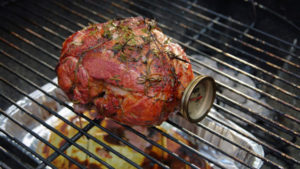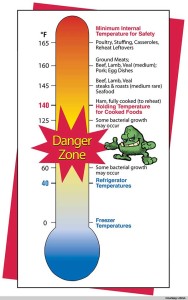 Summer is a great time to enjoy food and drink with family and friends, but summertime outdoor cooking also invites an unwanted guest – the threat of foodborne illness.
Summer is a great time to enjoy food and drink with family and friends, but summertime outdoor cooking also invites an unwanted guest – the threat of foodborne illness.
Whether at a family picnic, a barbecue at a park, sporting event or a group social activity, following some basic food safety rules can help prevent foodborne illness.
PLAN AHEAD
Ensure that you have adequate cooler space and ice to last for the entire event. Pack plenty of utensils and dishware, and never reuse utensils and dishware that have been in contact with raw meat (such as a marinade), fish or poultry unless they have been thoroughly washed in hot, soapy water. Disposable utensils and plates can be a great a help in preventing food contamination.
DON’T CROSS-CONTAMINATE
Be sure to keep raw meat, poultry and seafood in a leakproof container or securely wrapped to prevent juices from contaminating prepared/cooked foods or foods eaten raw, such as fruits and vegetables.
 WASH YOUR HANDS AND KEEP THINGS CLEAN
WASH YOUR HANDS AND KEEP THINGS CLEAN
If there are no facilities for hand-washing and no source of clean water at the site of your event, bring your own supply of water, disposable cloths or moist towelettes and paper towels for cleaning hands and work surfaces.
KEEP COLD FOODS COLD AND HOT FOODS HOT
Most bacteria do not grow rapidly at temperatures below 40 F or above 140 F. The temperature range in between is known as the “Danger Zone,” where bacteria can grow rapidly and pose a risk for foodborne illness. After cooking, warm temperatures support the growth of harmful bacteria in food left sitting out.
USE A MEAT THERMOMETER
You cannot tell if a burger or chicken is cooked by its color alone! Meat thermometers are inexpensive and provide a quick and easy way to check the internal temperature of meats on the grill. When reheating food at your outing, be sure it reaches 165 F. Keep hot foods at 140 F or hotter to prevent the growth of harmful bacteria.
WATCH OUT FOR LEFTOVERS
The USDA recommends that food not be left out of the cooler or off the grill more than two hours (one hour when the outside temperature is above 90°F). If picnic leftovers have been sitting out for more than one hour and could have had many people handling them, when in doubt, throw them out. The more time that food has been sitting at an unsafe temperature, the more likely harmful bacteria has grown.
ADDITIONAL INFORMATION
- Cooking for Groups: A Volunteer’s Guide to Food Safety – from the U.S. Department of Agriculture
- Eating Outdoors, Handling Food Safely and Barbecue Basics: Tips to Prevent Foodborne Illness – from the U.S. Food and Drug Administration
- Picnic Safety – from the U.S. Centers for Disease Control and Prevention
- Keep Food Safe – from the U.S. Department of Health and Human Services
- Seven Super Steps to Safe Food in the Summer and Grill Master – from the Partnership for Food Safety Education
